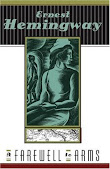My personal technology project involves mapping outlines for essays.
The objectives it relates to are:
11th grade
Objective 2
(Extended Writing): Write to analyze literary text and explain informational text. (Emphasize expository writing. Students should use the entire writing process to produce at least one extended piece per term, not necessarily limited to the type of writing emphasized at individual grade levels.)
a. Select an organizational pattern that suits the topic.
b. Provide detailed evidence and examples to substantiate arguments.
c. Support arguments with logic and text references.
In order to do this, I would first teach the students about the three main types of organization for essays (informational, persuasive and compare/contrast). We would discuss the different ways theses are written for these three different essays and different strategies for writing each type of essay. (We would write one type of each essay throughout the year.) I would initially have students think about a topic related to our class discussion that they wanted to explore more fully. I would then direct them to the following websites to explore which type of essay would best fit their topic idea. Their first assignment would be to do a rough outline of their type of essay on these websites and print them off to bring to class.
- http://www.readwritethink.org/materials/essaymap/ (informational essay)
- http://www.readwritethink.org/materials/persuasion_map/ (persuasive essay)
- http://www.readwritethink.org/materials/compcontrast/map/ (compare/contrast essay)
Here is an example of an essay map a student would produce. (the website lets you print, but not save, so this is just a scanned copy. Sorry it's kind of small.)

I would then put the students into partners with another students who was writing the same type of essay as they were. I would have them share their rough outlines and discuss their theses. I would then have them use MindMeister to create a detailed outline for their paper. I would tell them to have all the points from their essay map and then add quotes or facts and analysis of those facts. I would tell them to make these different things easy to recognize through the use of different fonts/colors/symbols for each different part of their outline. I would tell them to draw connections where they felt they were relevant.
This is an example. The purple nodes are quotes from the poem, and the green nodes are analysis/commentary on those quotes.
I would then have the students share their maps with their partner and see if their maps and connections made sense to their partner. After getting input from their partner, each student would begin a draft of their paper.
I think this is a useful tool for allowing students to organize their ideas and make sure they are clear BEFORE they start writing. Strong pre-writing makes the drafting process a lot easier, and this technology makes it easy map ideas, move things around, share with others and draw connections.


